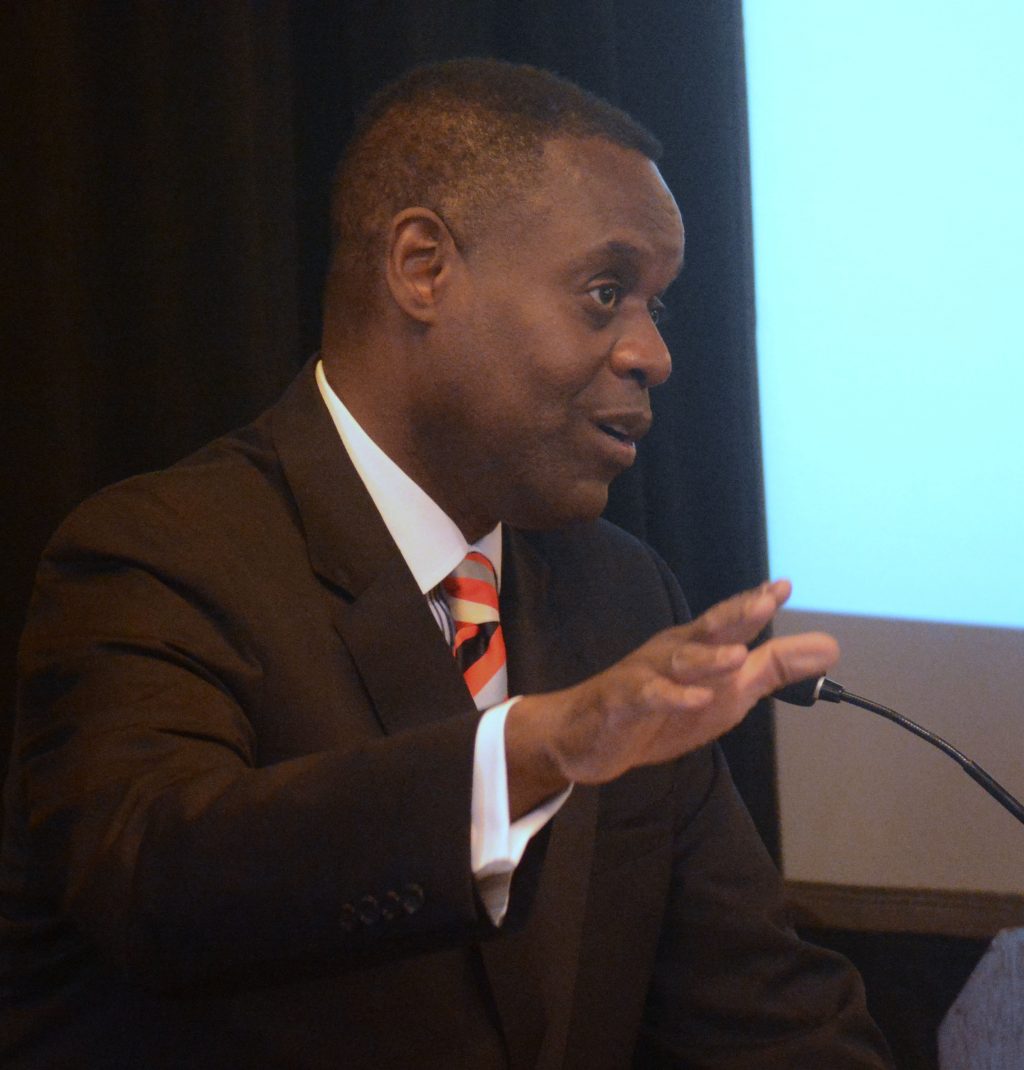Detroit’s Emergency Manager Assesses Bankruptcy Case’s Effects
As Michigan’s only emergency manager to file bankruptcy, Kevyn Orr reflects on his Detroit tenure.

As Detroit’s Emergency Manager, Kevyn Orr filed the city’s bankruptcy petition, making history and charting a future for the city, its residents and its retirees.
Appointed by Gov. Rick Snyder in March 2013, Orr left his position as partner of the Jones Day law firm in Washington D.C. He eventually hired his former employer, with City Council approval, to represent the city in the case, which lasted for 17 months and cost Detroit roughly $170 million in legal and consulting fees. Earlier in 2015, Orr worked as an advisor in Atlantic City, N.J., another city facing serious financial problems.
Now back at Jones Day, Orr joins Detroit Today with Stephen Henderson as part of WDET’s “Detroit Bankruptcy: One Year Later” to kick off the fourth week of the series, which is focusing on what effects the case has had, especially on the city.

Orr’s short answer to that question: “All the early indicators are positive,” he says.
When he started his tenure in Detroit, Orr says he tried to manage both the city’s financial emergency and city services, focusing on what he could do that would improve neighborhoods. Using his powers, he privatized trash collection and supported the new Public Lighting Authority, which is working to replace city streetlights. He also suspended the police commission, which he says was “under a great deal of scrutiny. It was alleged to have engaged in inappropriate behavior.” He hired Chief James Craig, whom he calls a “profile in courage, a native son of Detroit,” who immediately began departmental reforms that Orr credits for a drop in city crime.
But Orr says he recognized that his powers were buoyed by the “suspension of democracy” inherent to emergency management under Michigan law, and while public outcry about the symbolism of that was significant – especially in a majority African-American city – Orr says how Detroit got to the point where it needed state-mandated emergency management was a complicated mixture of several decades of actions and inaction.
Disenfranchisement by state and federal government played a role, he acknowledges, but that happened during the 1960s and 1970s in other U.S. cities: Atlanta, Chicago, Los Angeles and New York, for example. City leadership handled intergovernmental relationships differently. “We decided we were going to have a confrontational mode in Detroit that played itself out later,” Orr says.
Orr became the chief architect of the city’s Plan of Adjustment, the document that now-retired Bankruptcy Judge Steven Rhodes approved and the city is using to guide its financial management. Orr says the Plan won’t dictate all city administrative decisions and action, but instead should guide operations and finances.

“I say that as a cautionary tale to everyone in the city, that the plan is designed to be organic, to be iterative, to change and grow over time, to be merged with the Detroit Future City, with the planning and zoning direction of the mayor, Mayor Duggan and the city council,” he says.
The Plan, while reflecting deals with creditors, also has its limits in what it can help the city accomplish. For example, it doesn’t necessarily guide development decisions. Where and how economic development and revitalization happen in Detroit won’t ever be perfect, Orr acknowledges.
“It’s not always going to meet the expectations of everyone. I think if we study the way that has occurred in some neighborhoods, there may be an opportunity to adjust some of those concerns,” he says. “Because I’m highly confident that downtown is going to continue to thrive. It can’t help but thrive with the amount of energy that’s going on downtown. How do you get that out to the neighborhoods? It’s going to take some time and it’s going to take some managing expectations.”

